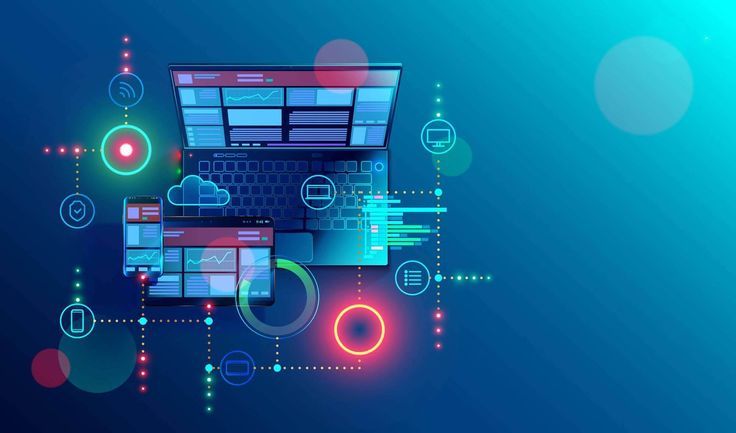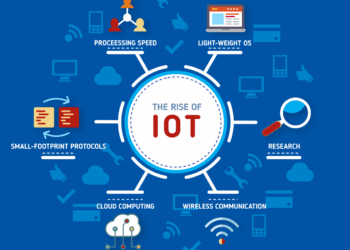In the 21st century, digital connectivity has transitioned from a luxury to a fundamental necessity. It is as vital to modern life as electricity or running water, serving as the gateway to education, employment, healthcare, and social participation. Yet, a significant portion of the global population remains disconnected, trapped on the wrong side of the digital divide. This gap, which separates those with access to digital technology from those without, is a critical social and economic issue. The global push for digital inclusion is a massive, collaborative effort to bridge this divide and ensure that everyone has the opportunity to participate in the burgeoning digital economy. This article will explore the three core pillars of digital inclusion—access, literacy, and content—discuss the profound consequences of the digital divide, and highlight the innovative global initiatives working to create a more equitable digital world.
The COVID-19 pandemic served as a powerful and painful wake-up call, exposing just how deeply intertwined our lives are with digital technology. Remote work became the norm, education shifted online, and essential services from banking to healthcare moved to digital platforms. For those with reliable internet and the necessary skills, this was a seamless, albeit challenging, transition. For the digitally marginalized, it was a crisis, further exacerbating existing inequalities and highlighting the urgent need for a more inclusive digital infrastructure. This global push is not merely a technical project; it is a moral and economic imperative to ensure that technology is a force for unity and empowerment, not a tool that deepens social stratification.
A. The Three Pillars of Digital Inclusion
Achieving digital inclusion is a multi-faceted challenge that extends far beyond simply providing an internet connection. It requires a holistic approach that addresses infrastructure, skills, and relevance.
A. Access to Infrastructure and Connectivity: The foundational pillar of digital inclusion is physical access to the internet. This means having the necessary infrastructure, such as fiber optic cables, reliable cellular networks, and public Wi-Fi hotspots. For many communities, especially in rural or remote areas, this infrastructure is either non-existent or prohibitively expensive. The challenge is not only geographical but also economic. Even in developed countries, low-income households may be unable to afford the high cost of a broadband connection or a personal computer. The core of this pillar is bridging the “last-mile” connectivity gap to ensure that a fast, affordable, and stable internet connection is available to everyone, everywhere.
B. Digital Skills and Literacy: Having access to the internet is only the first step. To truly be included, individuals must possess the digital literacy skills to use technology effectively and safely. This goes beyond knowing how to browse the web; it includes understanding how to use email, navigate government services, apply for jobs online, and, most importantly, critically evaluate information and identify misinformation. The skills gap is particularly pronounced among older generations, individuals with disabilities, and those with limited educational backgrounds. Without targeted training and education programs, many people will remain on the sidelines, unable to leverage the power of technology to improve their lives.
C. Availability of Relevant Content and Services: The final pillar is ensuring that the digital world offers content and services that are relevant and accessible to all. If online information is only available in a few dominant languages, or if digital services like banking and healthcare are not designed to meet the needs of diverse populations, then digital inclusion remains incomplete. This pillar requires a focus on local content creation, developing multilingual applications, and designing user interfaces that are intuitive for people with varying levels of technological proficiency. The goal is to make the digital world feel like a native environment, not a foreign land, for every user.
B. The Stakes of the Digital Divide: Why it Matters
The digital divide is not just a statistical anomaly; it has tangible, negative consequences that affect individuals, communities, and national economies.
A. Economic Inequality: In an increasingly digital economy, a lack of digital skills is a major barrier to employment and upward mobility. Jobs in almost every sector, from manufacturing to marketing, now require a basic level of digital proficiency. Individuals and communities on the wrong side of the divide are left behind, unable to access job listings, participate in the gig economy, or start online businesses. This creates a cycle of poverty and exclusion that is difficult to break, widening the gap between the digitally empowered and the digitally marginalized.
B. Educational Disparity: The digital divide has a profound impact on education, creating a stark disparity between students with and without internet access. During periods of remote learning, students without a reliable connection or a personal device were at a severe disadvantage, unable to attend virtual classes, complete assignments, or access educational resources. This has a long-term impact on their academic performance and future opportunities. The issue is not limited to remote learning; even in a traditional classroom setting, students who lack digital access at home are unable to keep up with their peers, leading to a widening achievement gap.
C. Limited Access to Essential Services: As governments, healthcare providers, and financial institutions move their services online, those without digital access are left behind. Telemedicine has proven to be a lifeline for many, but it is useless for individuals who cannot connect with a doctor online. Similarly, online banking provides convenience and security, but it excludes the unbanked and underbanked who rely on physical branches. The push towards digital-first government services, while efficient, risks disenfranchising a significant portion of the population that is not digitally literate.
C. Global Initiatives to Bridge the Gap
Recognizing the urgency of the problem, a wide range of actors, from governments to non-profits, are collaborating on innovative solutions to close the digital divide.
A. Public-Private Partnerships: Governments worldwide are working with telecommunications companies and technology firms to expand internet infrastructure to underserved areas. These partnerships often involve subsidizing the cost of laying fiber optic cables, building cellular towers in rural communities, and offering low-cost internet plans to low-income households. Programs like the U.S. government’s Affordable Connectivity Program or public Wi-Fi initiatives in cities are examples of this collaborative effort to treat internet access as a public utility.

B. Digital Literacy and Training Programs: A growing number of non-profit organizations, educational institutions, and government agencies are launching programs to teach digital skills to those who need them most. These initiatives range from community-based workshops for senior citizens to coding bootcamps for at-of-work adults. The focus is on providing practical, hands-on training that empowers individuals to use technology for employment, education, and personal growth. These programs often tailor their curriculum to the specific needs of a community, addressing everything from basic computer use to advanced cybersecurity.
C. Technology Innovations Focused on Inclusion: The technology industry itself is contributing to the solution by developing new tools and platforms designed to be more inclusive. Projects like Starlink, a satellite internet service, are promising to provide high-speed internet to some of the most remote regions on Earth, bypassing the need for terrestrial infrastructure. Additionally, tech companies are creating apps that can function with low bandwidth or even offline, ensuring that services remain accessible even in areas with poor connectivity. The development of ultra-affordable smartphones and refurbished devices is also helping to lower the barrier to entry for millions of people.
In conclusion, the global push for digital inclusion is a critical movement aimed at rectifying one of the most pressing inequalities of our time. It is a complex challenge that demands a coordinated, multi-pronged approach addressing not only physical access but also the crucial pillars of digital literacy and content relevance. The digital divide is a barrier to economic opportunity, educational equity, and access to essential services. By working together, governments, corporations, and civil society can ensure that technology is a force that empowers, connects, and uplifts every individual, regardless of their background or location. The future is digital, and for it to be a just future, it must be an inclusive one.













